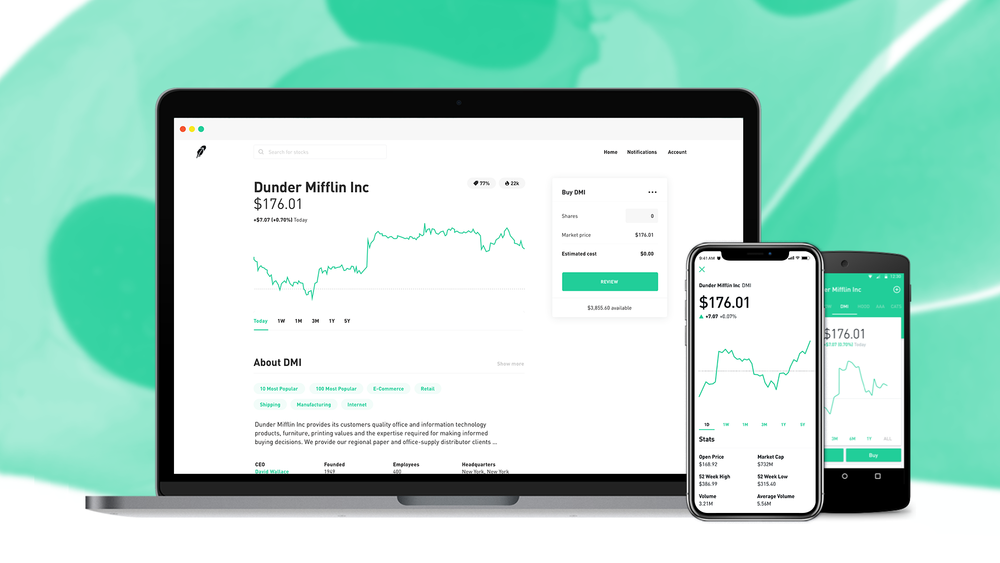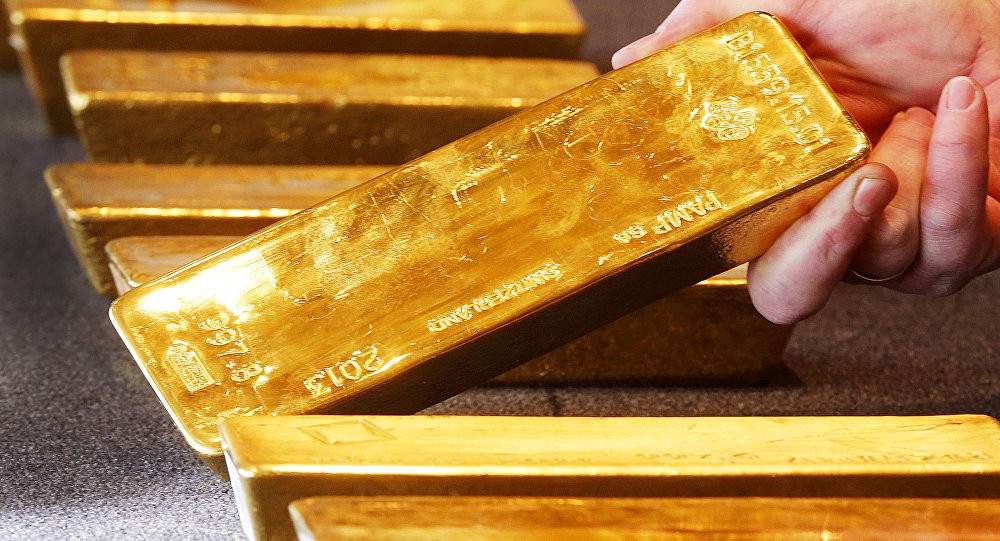Contents:


In other words, Sharpe and Treynor measure the return of a fund per unit of risk. It gives a much better view of whether the fund is earning returns by taking on higher risk or not. Also, it assumes that the maximum price movement is the same in either direction — up or down.
While the Treynor ratio considers only the systematic risk of a portfolio, the Sharpe ratio considers both systematic and idiosyncratic risks. Normally, a higher Sharpe ratio indicates good investment performance, given the risk. For example, Investment Manager A generates a return of 15%, and Investment Manager B generates a return of 12%.
The model basically selected securities based on the yields/returns. But at times the high yields could be on account of bubbles due to insider trading. A more refined approach was adopted by checking the stock fundamentals of the model-selected portfolio . Several studies across India examined the efficacy of the single-index model for the stocks listed on the BSE. Nalini studied 15 Indian stocks and selected four stocks to form an optimal portfolio using the single-index model from the S&P BSE index. The Sharpe ratio of the optimised portfolio rose from 0.527 to 0.994 (for the S&P Nifty index).
Data availability
Markowitz put him to work and asked him to find a simpler method for sharpe ratio meaning selection and optimisation. Sharpe simplified the model which we now know as the ‘market model’ or the single-index model . Unexpected changes in these variables would cause unexpected changes in the prices and returns of all the stocks in the market. Sharpe proposed that all the economic factors could be summarised by one macroeconomic indicator which would move the entire market. Further, it was assumed that all other uncertainties in stock returns were firm-specific, i.e., there was no other form of correlation between the securities. Firm-specific events such as profits, management quality, new inventions, etc., would only affect the fortunes of individual firms and not the whole market or the broad economy in any significant way.
Why Portfolio Diversification Helped Investors in 2022 – Morningstar
Why Portfolio Diversification Helped Investors in 2022.
Posted: Mon, 10 Apr 2023 07:00:00 GMT [source]
Then there’s leverage, or debt an investor takes on to increase the potential return from an investment. The use of leverage increases the downside risks in an investment. If the standard deviation rises too significantly, the Sharpe ratio will decline dramatically and the size of any loss will be significantly magnified, potentially triggering a margin call for the investor. It’s important to note that the Sharpe ratio assumes that an investment’s average returns are normally distributed on a curve.
What the Sharpe Ratio Can Tell You
It takes into account your returns and your risk, and shows you whether your returns are worth the level of risk you’re taking on. Next, you need the rate of a risk-free investment, such as Treasury bonds. Subtract this risk-free rate from your portfolio’s rate of return to find the excess return, or what your investment gives you above the Treasury bond.
The Sharpe ratio has inherent weaknesses and may be overstated for some investment strategies. A higher Sharpe ratio is better when comparing similar portfolios. For example, let’s say you use the Sharpe ratio using numbers around a three-year investment.
Bailey and López de Prado show that Sharpe ratios tend to be overstated in the case of hedge funds with short track records. These authors propose a probabilistic version of the Sharpe ratio that takes into account the asymmetry and fat-tails of the returns’ distribution. To calculate the Sharpe ratio, investors first subtract the risk-free rate from the portfolio’s rate of return, often using U.S. Then, they divide the result by the standard deviation of the portfolio’s excess return.

Chris B. Murphy is an editor and financial writer with more than 15 years of experience covering banking and the financial markets. Compare – Trailing PE Vs Forward PE RatioTrailing PE uses earnings per share of the company over the previous 12 months for calculating the price-earnings ratio. In contrast, Forward PE uses the forecasted earnings per share of the company over the next 12 months for calculating the price-earnings ratio. Moreover, the risk-free rate could be the US treasury yield or rate. As it may change annually, it is essential to put the current percentage on the table. Here is the step-by-step procedure to calculate the ratio in the excel sheet.
If a particular Treasury security paid a 3% annual yield, the Sharpe ratio would employ 3% as the risk-free rate for comparative purposes. Portfolio diversification with assets having low to negative correlation tends to reduce the overall portfolio risk and consequently increases the Sharpe ratio. For instance, let’s take a portfolio that comprises 50 per cent equity and 50 per cent bonds with a portfolio return of 20 per cent and a standard deviation of 10 per cent. Let’s add another asset class to the portfolio, namely a hedge fund, and tweak the portfolio allocation to 50 per cent in equity, 40 per cent in bonds and 10 per cent in the hedge fund. After the addition, the portfolio return becomes 25 per cent and standard deviation remains at 10 per cent.
Formula and Calculation of Information Ratio (IR)
The expected return is the amount of profit or loss an investor can anticipate receiving on an investment over time. The square root of the variance, or standard deviation, has the same unit form as the analyzed data series and often measures risk. Understanding the relationship between the Sharpe ratio and risk often comes down to measuring the standard deviation, also known as the total risk. The square of standard deviation is thevariance, which was widely used by Nobel Laureate Harry Markowitz, the pioneer of Modern Portfolio Theory. Some would argue that investors were fairly compensated for the risk of choosing equities over bonds.
The ratio analyzes performance over the long term, to help investors get a return that may not be the greatest possible, but is still good enough when downturns arise. Typically, fund managers are supposed to eliminate unsystematic risk in the portfolio by diversifying, so they should only be rewarded for systematic risk. Just to recap, Sharpe and Treynor measure returns per unit of risk. However, Sharpe uses standard deviation as the denominator while Treynor uses Beta as denominator.
In other words, amid multiple funds with similar returns, the one with a greater standard deviation possesses a lesser Sharpe index. So, it must produce a higher return to balance the greater deviation and sustain the higher ratio. Also, adding new underlying assets can stimulate the total portfolio return with no extreme risk. To clarify, the calculation of Sharpe ratio assesses standard deviation, which presumes a uniform dispersal of returns. Hence, it might not be a good performance metric for variable return distribution with skewness lesser or greater than zero.
- Sharpe ratios, along with Treynor ratios and Jensen’s alphas, are often used to rank the performance of portfolio or mutual fund managers.
- Take the return variance from the average return in each of the incremental periods, square it, and sum the squares from all of the incremental periods.
- The model basically selected securities based on the yields/returns.
- However, the final verdict of the same study was that since in reality the true market portfolio cannot be observed, it is impossible to disregard the model .
- Kurtosis—fatter tails and higher peaks—or skewness can be problematic for the ratio as standard deviation is not as effective when these problems exist.
- Investors have homogenous expectations with respect to return and risk.
Empirical evidence also showed that portfolios with securities having positive covariances outperformed Markowitz’s optimum portfolios . Owing to the limitations discussed and the contrary empirical evidence, the need for a simpler method for portfolio selection had become imperative. William Sharpe was a doctoral student at UCLA majoring in economics and finance. When the time came for Sharpe to write his thesis, Fred Weston suggested that he should meet Markowitz.
Ex ante estimates — and they are estimates — usually are based on financial modeling, using historical data. An investor might use the historical standard deviation of a portfolio’s returns and assume that standard deviation will persist going forward. Combined with an estimate of the risk-free rate, she can model the portfolio returns desired — or check that the desired returns are achievable at an acceptable level of risk.
An investor has a choice of three portfolios, all with expected returns of 10% for the next 10 years. The average returns in the table below indicate the stated expectation. The returns achieved for theinvestment horizonis indicated by annualized returns, which takescompoundinginto account. As the data table and chart illustrates, the standard deviation takes returns away from theexpected return.
- For example, Mr. Sharpe anticipates a 13% return on his portfolio in the coming year.
- Meanwhile, Roth leverages risk-managed spot Ethereum and risk-managed spot Bitcoin to move them to a safe or risk-off mode.
- The model will be referred to as the Sharpe single-index model or market model or simply Sharpe model in the paper.
Herein lies the underlying weakness of the ratio – asset returns are not normally distributed. A negative Sharpe ratio means the portfolio has underperformed its benchmark. All other things being equal, an investor typically prefers a higher positive Sharpe ratio as it has either higher returns or lower volatility. However, a negative Sharpe ratio can be made higher by either increasing returns or increasing volatility .
The main problem with the Sharpe ratio is that it is accentuated by investments that don’t have a normal distribution of returns. In a common definition of risk, the standard deviation or variance takes rewards away from the investor. As such, always address the risk along with the reward when choosing investments.
Moreover, the measure considers standard deviation, which assumes a symmetrical distribution of returns. For asymmetrical return distribution with a Skewness greater or lesser than zero and Kurtosis greater or lesser than 3, the Sharpe ratio may not be a good measure of performance. So why did Sharpe choose the standard deviation to adjust excess returns for risk, and why should we care? We know that Markowitz understood variance, a measure of statisticaldispersionor an indication of how far away it is from theexpected value, as something undesirable to investors. If the new investment lowered the Sharpe ratio it would be assumed to be detrimental to risk-adjusted returns, based on forecasts. This example assumes that the Sharpe ratio based on the portfolio’s historical performance can be fairly compared to that using the investor’s return and volatility assumptions.
Its limitations were resolved to a large extent by the improvisations of Sharpe , Lintner , and Mossin . Harris pointed out that the model had several applications and had been subjected to rigorous empirical testing which led to important propositions about the risk and its effect on the pricing of the assets. Later, Kaplan went on to create a very generalised functional model based on the pillars of the Markowitz model which he aptly renamed Markowitz 2.0.
Sharpe Ratio Formula and Definition With Examples – Investopedia
Sharpe Ratio Formula and Definition With Examples.
Posted: Sat, 25 Mar 2017 22:08:47 GMT [source]
However, funds with a low standard deviation can earn High Sharpe Ratio and give consistent moderate returns. Here’s where the Sharp ratio provides you with a more holistic view of your investments. In this example, Portfolio A has a standard deviation of 8% and Portfolio B has a standard deviation of 4% . The market risk premium is represented by the (Rp – Rf) part of the formula. Investments can be evaluated solely in terms of their projected returns.
This gives a clear picture to the investors, and they get to know if the risk they take is giving good returns or not. The above-given table shows the indicators of the good and bad Sharpe Ratio. Investments having less than 1.00 do not generate higher investor returns. The more returns generated by the fund during the same time will be 2.00%. The Sharpe ratio is widely used among investors to evaluate investment performance. Part of its popularity is based on the ease of calculating and interpreting the ratio.
The Sharpe ratio is one of the most widely used methods for measuring risk-adjusted relative returns. It compares a fund’s historical or projected returns relative to an investment benchmark with the historical or expected variability of such returns. Volatility is often understood as a bad thing, Frederick points out.
The Sharpe-r Way to Invest – ETFdb.com
The Sharpe-r Way to Invest.
Posted: Fri, 27 Jan 2023 08:00:00 GMT [source]
Both are named for their creators, Nobel Prize winner William Sharpe and American economist Jack Treynor, respectively. While they may help investors understand investments and risk, they offer different approaches to evaluating investment performance. The Sharpe ratio helps investors understand an investment’s return compared to its risk while the Treynor ratio explores the excess return generated for each unit of risk in a portfolio.
As a result, the standard deviation used to calculate the Sharpe ratio may understate tail risk. The Sharpe ratio compares the return of an investment with its risk. It’s a mathematical expression of the insight that excess returns over a period of time may signify more volatility and risk, rather than investing skill. In its calculation, the Sortino ratio still uses a risk-free rate, but subtracts that from the portfolio’s average rate of return rather than the known or expected rate of return.
